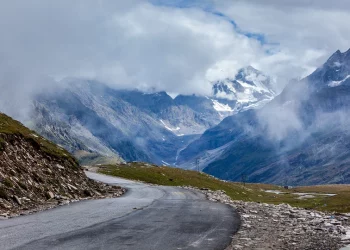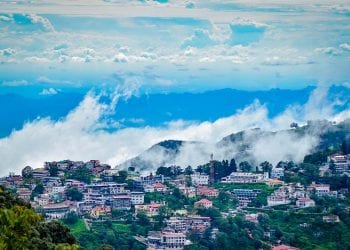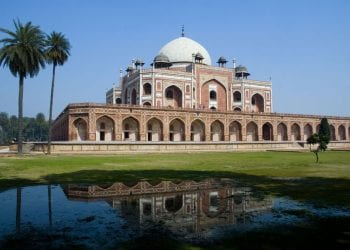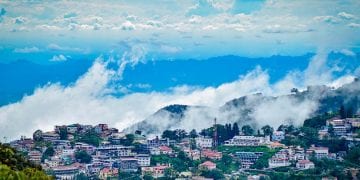Chamunda Devi Temple: One of the Shakti Peeth in Dhauladhar Range
In the hills of Himachal Pradesh, about 15 km from Dharamshala and 10 km from Palampur is the Chamunda Devi temple. The temple is dedicated to the Goddess Chamunda, one of the forms of the divine mother Durga and one of the seven Matrikas. the temple is known for its natural beauty set against the backdrop of the Dhauladhar mountains and the beautiful scenery of Himachal Pradesh.
Among the hundreds of temples in the same area, Chamunda Devi temple is one of the most important. It is visited by thousands of devotees from all over India daily. The idol around which the temple is built is very important and is wrapped in a red cloth. There are several legends and myths around the idol and the Goddess of the temple. It is said that reciting the Shat Chandi mantras here will bring good luck and prosperity to the devotees. In the same temple, in a small cave underground lies a Shiva Lingam – a symbol of Lord Shiva himself. The temple is most visited during the Navratri festivities and other festivals celebrated by the Hindu people. The temple is said to be 700 years old and has undergone many cycles of renovation and re-building. Apart from being a religious and spiritual destination, the natural beauty of the area also makes it a popular picnic spot.
History
Chamunda Devi temple has had a rocky history. Until 1991, the temple was in ruins, having been burnt by lightning and fierce fires, as well as a lack of maintenance and upkeep. However, in 1992, one man, Mr. P D Saini, undertook the sole responsibility of its restoration and worked tirelessly for 20 years, with the help of a group of devotees to bring the temple back to its former glory. The man still works for the temple today despite the maintenance duties having been taken over by the government.
The goddess to whom the temple is dedicated, Goddess Chamunda is one of the forms of the Goddess Durga and one of the seven Matrikas. The Matrika goddesses are heralded as the warriors who protect good from the forces of evil and are said to have been created by the Gods to fight demons like Nirrita and Andhaka. The Goddess’ name is derived from the monsters Chanda and Munda, two monsters who she is said to have killed from the very same mountain the Chamunda Devi temple is built on. The goddess is offered both animal and plant offerings, and being a goddess of tribal origin, is sometimes offered meat and liquor in rituals.
This temple is one of the Shakti Peeth temples, established hundreds of years ago. It is considered as one of the most historically significant temples in India, one of the few highly popular temples dedicated to tribal goddesses.
The myth behind the construction of the temple is as follows. 400 years ago, the King of the area where the temple lay prayed to ask the goddess for her permission to move the temple from the dense, hilly forests to a place more accessible by the people. The Goddess, who appeared in a dream to the Brahmin, granted her permission and asked him to dig a certain area; upon finding an ancient idol in that area, they proceeded to build a temple around the idol so the people can worship her.
The King and the Brahmin followed her command and found the idol, but came across a new problem; the idol was too heavy for the men to lift. Worried, the Brahmin once again prayed to the deity. She appeared to him again and berated him for treating the idol like it was any other stone. She told him to wake up early in the morning, take a bath and wear fresh clothes. After doing this, he was to go to the idol and pray devotedly. Upon doing all this, he should be able to lift the statue with ease. The Brahmin carried out the Goddess’ instructions and easily lifted the idol, allowing for the construction of the temple that stands today.
Architecture and Geography
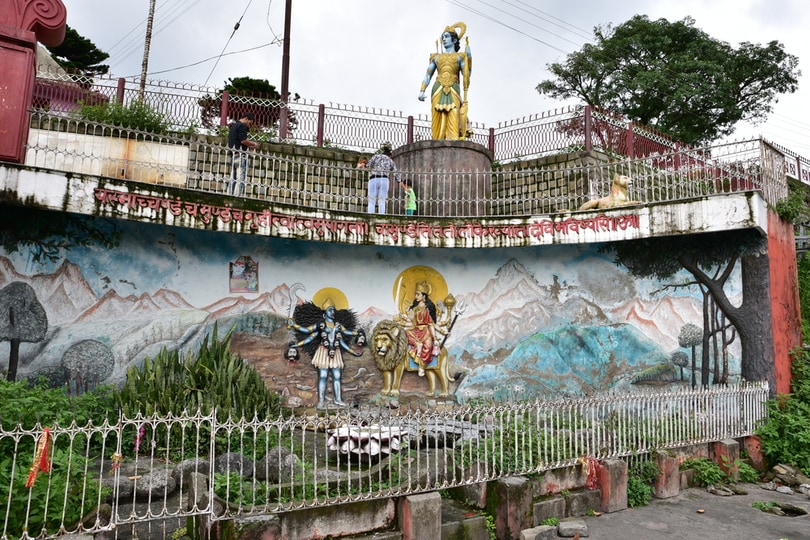
The temple is constructed in the Tantric style that most of the Shakti Peeth temples are made in. The temple incorporates images from mythology and legend that surround the goddess. The idol of the goddess is flanked by statues of Lord Bhairav and Lord Hanuman, two gods who are said to be the guards of the fierce goddess. According to a legend, Chamunda was enshrined as the chief deity Rudra Chamunda in the battle between the demon Jalandhara for which the Maitrika goddesses were created to conquer. Appropriate to the hilly region of the temple, the architecture of the building is molded to fit the requirements of its geography. Located on the banks of the river Baner, the temple enjoys a seat in the lap of nature, surrounded by mountain ranges, valleys, and picturesque forest scenery.
The temple is located on the banks of the Ban Ganga river, making the view that much prettier. Due to this, many pilgrims and saints come to perform penance and meditation, and the temple’s peaceful environment allows for such silence. The temple also has a lake with sweet water that allows the pilgrims to take a dip and refresh themselves. The water in the lake is considered holy and healing for the body, mind, and soul. The idol is so sacred and holy that even the eyes of the visitors are not allowed to look upon it; it is covered by a red cloth that hides the goddess from the gaze of the devotees. The temple is not only dedicated to the Goddess but also to Lord Shiva, whose Lingam is situated in a small scoop-like cave under the main temple.
The architecture of the temple is not very special, and there is little to differentiate it from the other temples in the area, but what makes this temple unique is that the scenic beauty of the location and the awe-inspiring peace and calm that a devotee feels when they enter the premises. Visitors to the temple also praise the locals and the priests, claiming that the people there are aware of the beauty of the location and are very helpful to tourists, visitors, and devotees equally.
Visiting the Temple
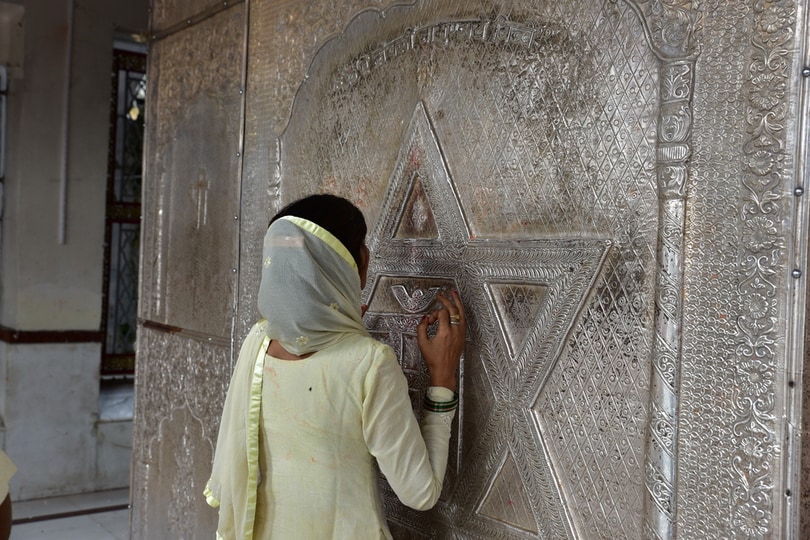
Chamunda Devi Temple is located in Himachal Pradesh and is accessible by trek or by jeep. However, it is recommended to trek to the temple if you are physically able to as the journey is highly enjoyable and very scenic. The trek is also a good exercise for the bones, joints, muscles, and general cardiovascular health. So, if you are an outdoors-loving, adventurous type of person, you would enjoy making the trip from the base to the temple by a trek on foot.
As the temple is located in a hilly, cold climate region, it is recommended to carry warm clothing like sweaters, jackets, mufflers, and gloves as the nights can get very cold and windy, while the daytime is cold but pleasant during the summer. It is also recommended to carry your own tenting and camping gear if you wish to sleep overnight under the brilliant starry sky. If you are trekking up the hills, you also should carry along some water and snacks, as there are little to no services for such things available on the way to the Chamunda Devi temple.
The temple provides accommodation and dorm housing to the visitors and devotees on a first come first serve basis but during the festival season when the temple gets extremely crowded, it is recommended that if you are visiting during the festivals, to ensure you have alternate accommodation. Just a hint- camping in the hills is an experience you must not miss out on. Pack some warm cup noodles and instant coffee and prepare yourself for a night under the stars in one of the most peaceful places on Earth.
Best Time to Visit
The best time of year to visit the Chamunda Devi Temple is during the months between May and September. After September and before May it is too cold in the region to enjoy the temple comfortably. The best time of day would be around noon or evening when the sun is up and it is not too windy. During summer, the temperature is a pleasant 25 degrees, which is comfortable for most people from all over India.
Best Places To Visit Near the Temple

Chamunda Devi temple is located near several must-see tourist spots that make the location much more appealing. The following are the tourist spots near and around the Chamunda Devi temple which you must visit. These include the Kareri Lake, Kangra Valley, Dal Lake, Kangra Fort, Baijnath Temple, Indrahar Pass Trek, Dhauladhar Range, Brajeshwari Temple, Kangra Art Museum and Palampur Tea Plantations.
Most of these locations are accessible by car or van but a few like the Indrahar Pass Trek can only be enjoyed on foot while enjoying the beauty of nature, the crisp cool air, and warm beverages.
A visit to Himachal Pradesh would be incomplete without a visit to this beautiful temple. If not for the amazing legends and historical and religious significance of the Goddess to whom the temple is dedicated, one must visit for the sheer beauty of nature- the Dhauladhar Mountains and the rivers that flow beside the temple. The temple is also an amazing picnic spot for all, and due to the photogenic nature of the surroundings, is a great spot to take pictures.
P.s. You might like these related resources
- Kangra Fort: A Complete Travel Guide
- Dharamshala: A Complete Guide on Best Time to Visit
- Best Weekend Gataways From Manali For Your Weekend Trip!
Recent Posts
Top Picks

- OYO
 15 April, 2024
15 April, 2024 - Cultural Tour

- OYO
 15 April, 2024
15 April, 2024 - Cultural Tour

- OYO
 15 April, 2024
15 April, 2024 - Cultural Tour

- OYO
 15 April, 2024
15 April, 2024 - Cultural Tour

- OYO
 15 April, 2024
15 April, 2024 - Cultural Tour

Please rotate your device
Please go back to portrait mode for the best experience



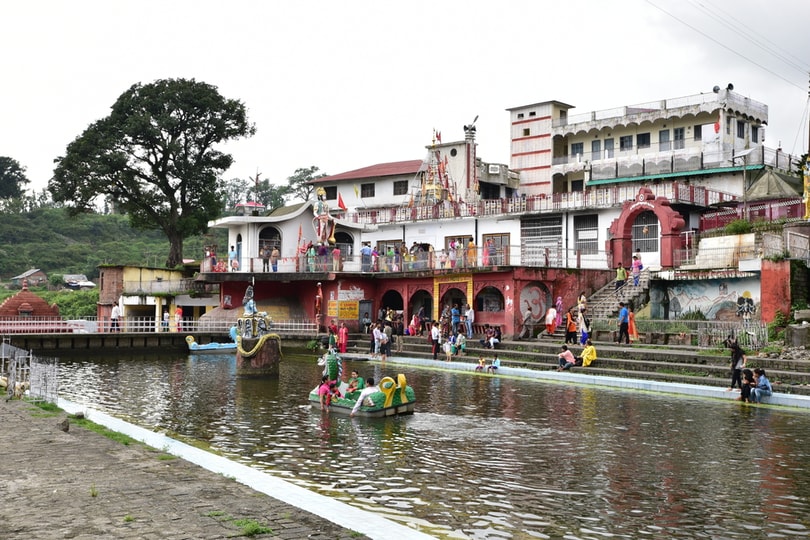

 April 15, 2024
April 15, 2024 